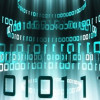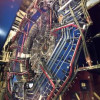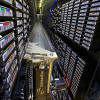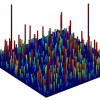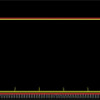News
Petaflops Power to NERSC
The National Energy Research Scientific Computing Center (NERSC) recently marked a major milestone, putting its first petascale supercomputer into the hands of its 4,000 scientific users. The flagship Cray XE6 system is called “Hopper” in honor of American computer scientist Grace Murray Hopper; it is capable of more than one quadrillion floating point operations per second, or one petaflops, and is currently the second most powerful supercomputer in the United States, according to the TOP500 list. Read More »
Superfast Search Engine Speeds Past the Competition
Our world is increasingly data-driven, whether we are searching for information on our home computer, accessing databases for everything from medical records to financial data, or scanning the depths of outer space to unlock the secrets of the universe. As data volumes increase, making sense of all this data increasingly requires an ability to quickly find essential pieces of information buried in a mountain of bytes Read More »
Proton Dripping Tests a Basic Force of Nature
Like gravity, the strong interaction is a fundamental force of nature. It is the essential “glue” that holds together atomic nuclei (composed of protons and neutrons) to form atoms, the building blocks of nearly all the visible matter in the universe. Despite its prevalence in nature, researchers are still searching for the precise laws that govern the strong force. However, the recent discovery of an extremely exotic, short-lived nucleus called fluorine-14 in laboratory experiments may indicate that scientists are gaining a better grasp of these rules. Read More »
Berkeley's James Demmel Elected to National Academy of Sciences
James W. Demmel, a professor at the University of California, Berkeley, who has a joint appointment in Lawrence Berkeley National Laboratory’s Computational Research Division, is one of 72 new members elected to the National Academy of Sciences (NAS). Election to the NAS recognizes distinguished and continuing achievements in original research. Read More »
LED Lighting Comes out of the Dark
Despite being cool, ultra-efficient and long lasting, the light-emitting diode (LED) has yet to conquer the general lighting market due to a problem called “efficiency droop.” New findings from simulations carried out at the National Energy Research Scientific Computer Center (NERSC) have unearthed droop’s elusive cause, researchers say, paving the way for wider LED use. Read More »
Supercomputer Cracks "Impossible" Calculation
Australian researchers have done the impossible—they’ve found the sixty-trillionth binary digit of Pi-squared! The calculation would have taken a single computer processor unit (CPU) 1,500 years to calculate, but scientists from IBM and the University of Newcastle managed to complete this work in just a few months on IBM’s BlueGene/P supercomputer, which is designed to run continuously at 1petaflop/s—that’s one quadrillion calculations per second! Read More »
Heaviest Antimatter Particle Detected with NERSC Help
Eighteen examples of the heaviest antiparticle ever found, the nucleus of antihelium-4, have been made in the STAR experiment at RHIC, the Relativistic Heavy Ion Collider at the U.S. Department of Energy’s Brookhaven National Laboratory. Read More »
NERSC Honored for Innovative Use of Globus Online
At GlobusWORLD 2011, held April 11-13 at Argonne National Laboratory, NERSC was awarded "Most Innovative Use of Globus Online" for using it to archive data onto HPSS. Read More »
Team ratchets up accuracy for identifying protein bits
Anyone who has tried to match an unfamiliar bird’s features to its field guide portrait knows that reality rarely provides a perfect comparison to the ideal specimen. - See more at: http://ascr-discovery.science.doe.gov/feature/peptide1.shtml#sthash.aZGOkaey.dpuf Read More »
Boosting the Next Wave of Accelerators
Albert Einstein’s most famous thought experiment is proving its worth once again as researchers use it to help speed up the modeling (and thus design) of so-called “tabletop” accelerators. Read More »







 Instagram
Instagram YouTube
YouTube
